Nexus 7 (2013) - Mini Review
by Brian Klug on July 27, 2013 12:54 AM EST- Posted in
- Tablets
- Snapdragon
- Qualcomm
- Android
- Mobile
- APQ8064
- Nexus 7
- Android 4.3
Last year the Nexus 7 debuted with a Tegra 3 SoC, which for reminder consisted of a 4+1 architecture of ARM Cortex A9 CPUs, with the 4 A9s built on 40nm G, and the +1 “shadow core” A9 built on 40nm LP (TSMC’s 40 LPG process), accompanied by ULP GeForce GPU with 12 cores running at a max GPU clock of 416 MHz. The exact SoC was NVIDIA’s Tegra 3 T30L, which could run one A9 at up to 1.3 GHz and all A9s at up to 1.2 GHz.
Rather than the relatively logical upgrade path of going to NVIDIA’s Tegra 4 SoC (I’ve heard all manner of speculation about what happened there), the new Nexus 7 switches to Qualcomm’s APQ8064–1AA, a version with 4 Krait 300 CPU cores (yes, Krait 300, not 200) running at up to 1.5 GHz and Adreno 320 graphics. Rather than use a PoP and LPDDR2, this specific APQ8064 variant goes to PCDDR3L–1600 MHz instead, including 4, 4Gb discrete 1.35V SK-hynix DRAM devices off to the side (more on the opposite side of the PCB) adding up to 2 GB of RAM. Qualcomm's Snapdragon S4 Pro and Snapdragon 600 branding gets confused here, although Qualcomm is calling the APQ8064 inside the Nexus 7 (2013) S4 Pro, it's more like an underclocked or lower binned Snapdragon 600.
At this point APQ8064 is probably the most well understood SoC in recent memory (so much so that I’m pining for devices to include something different just from an academic perspective) so I’ll spare the very verbal discussion about its performance.
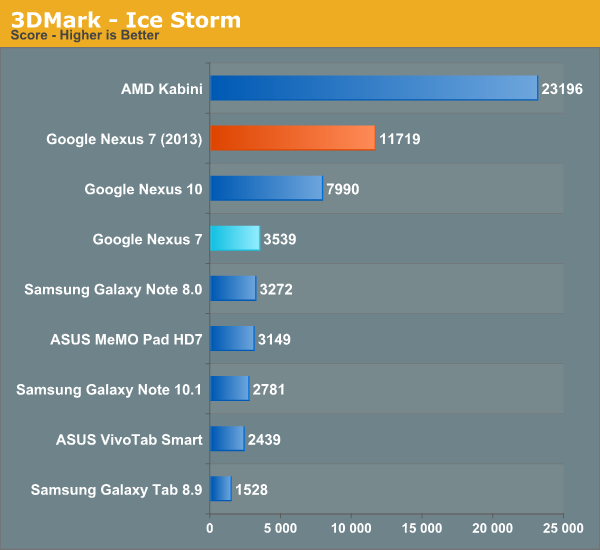



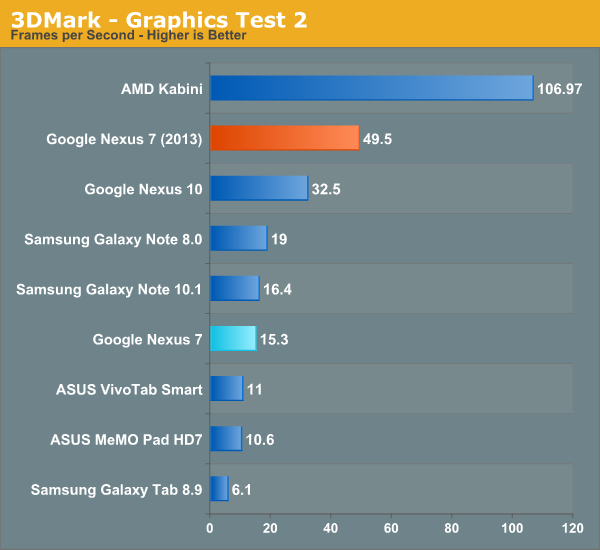
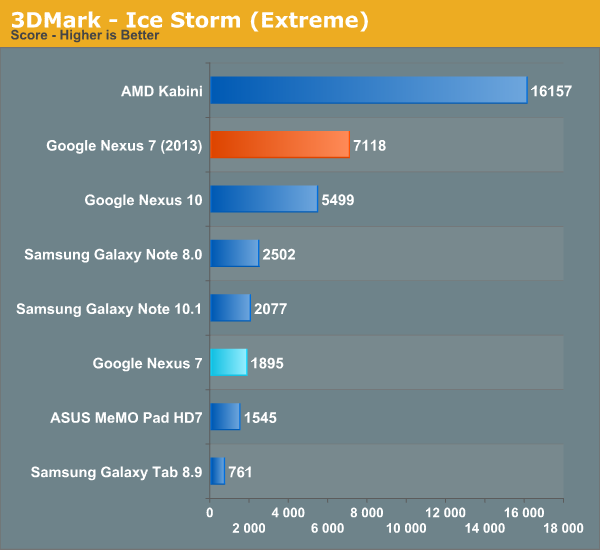

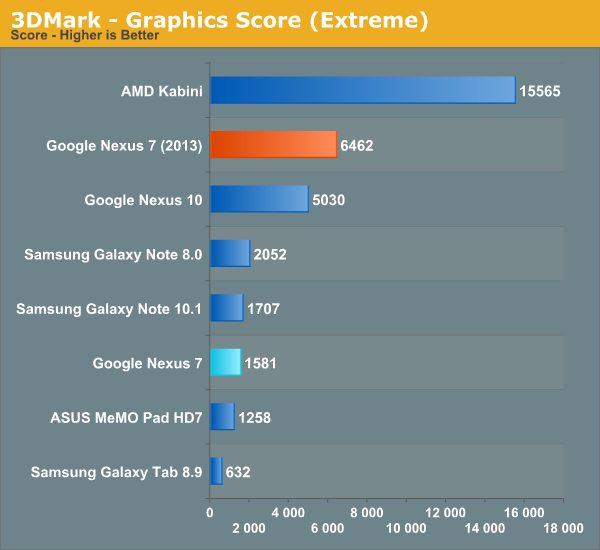

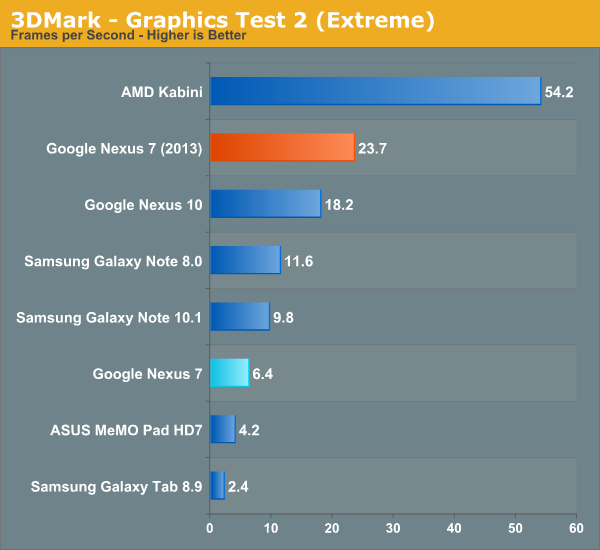


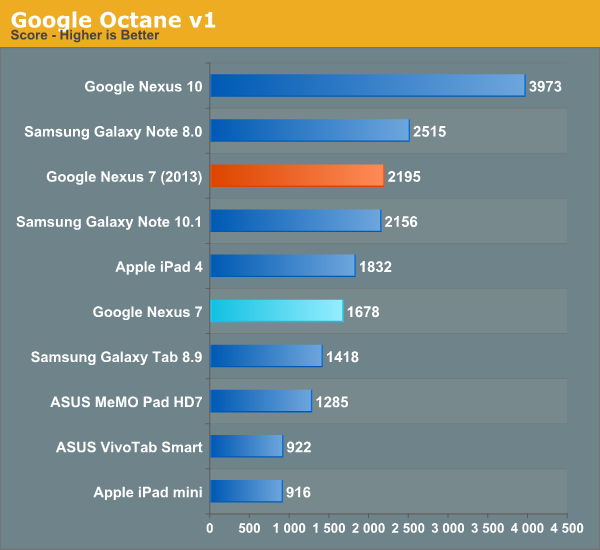
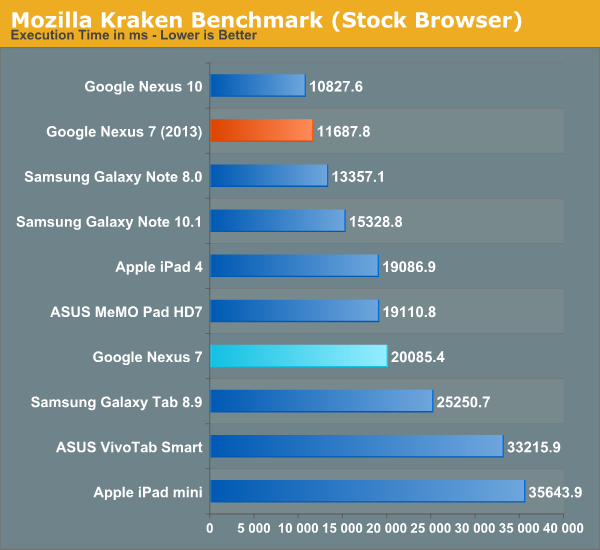
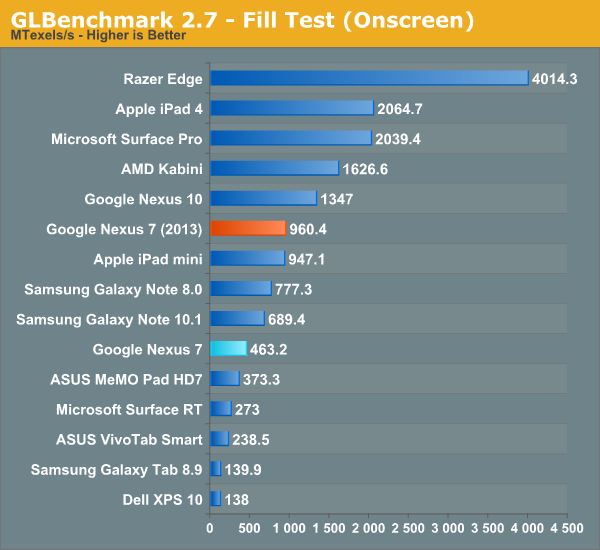
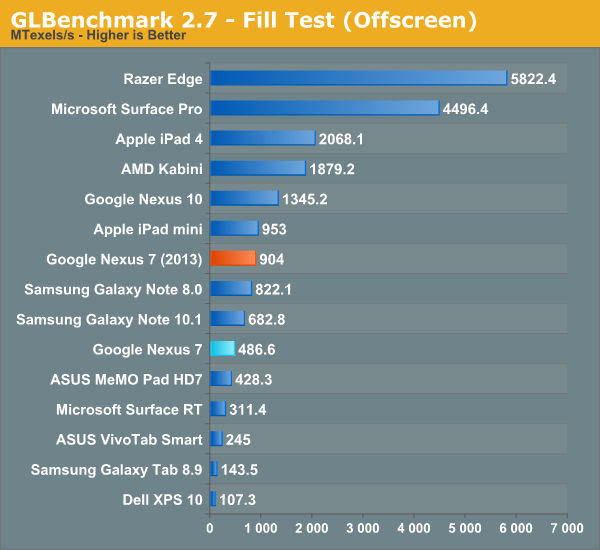
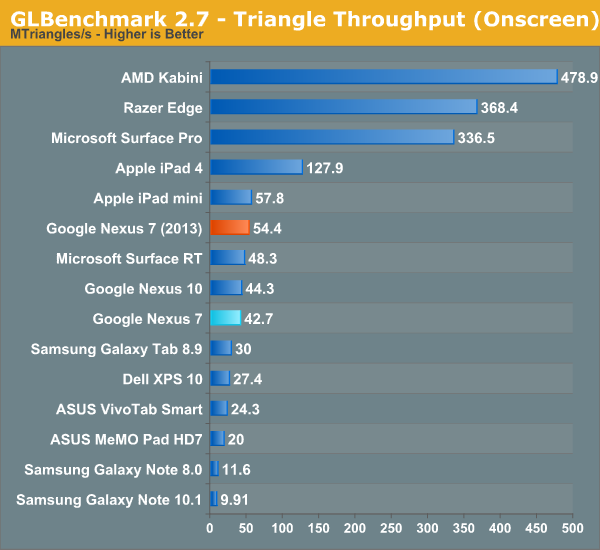
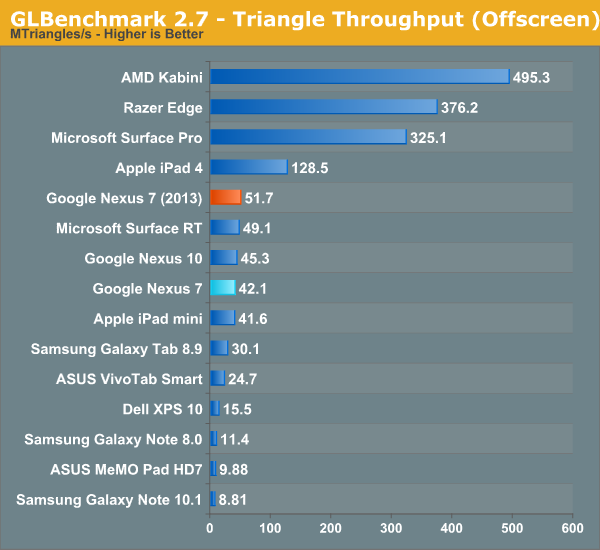
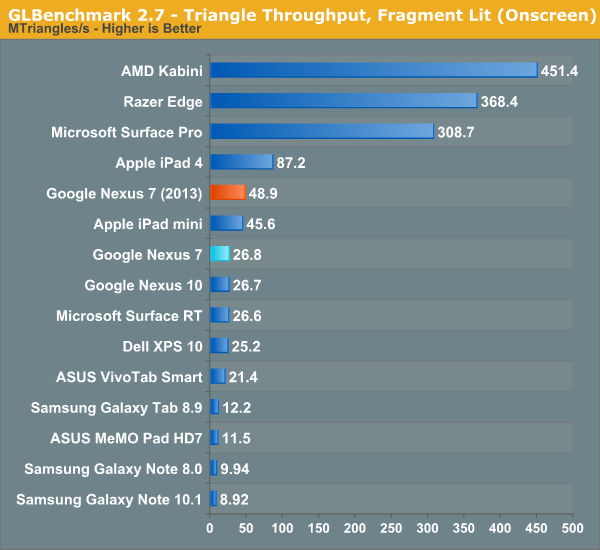
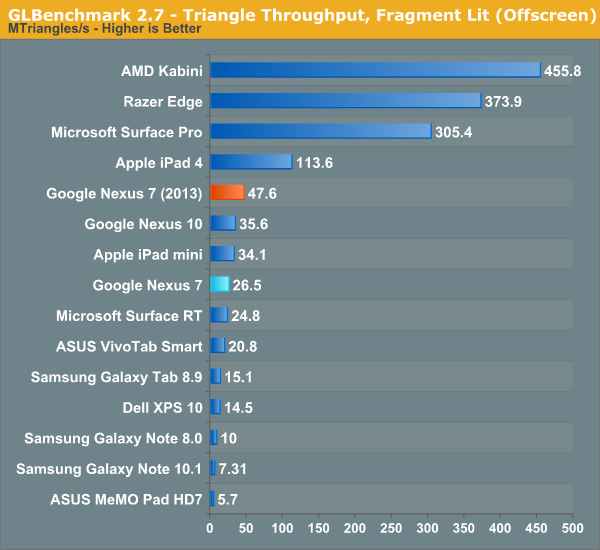
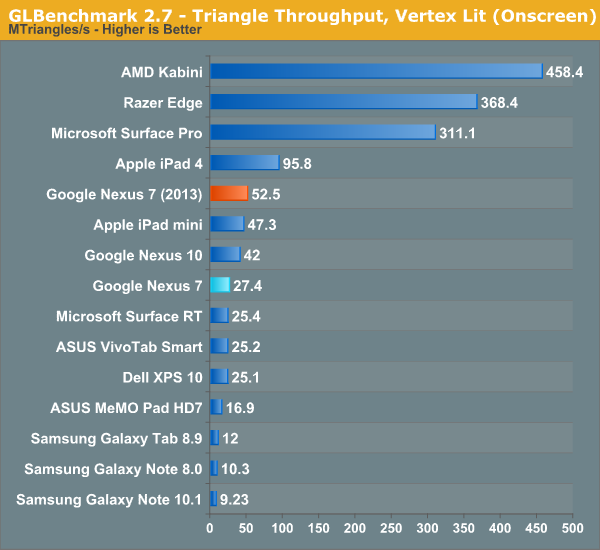
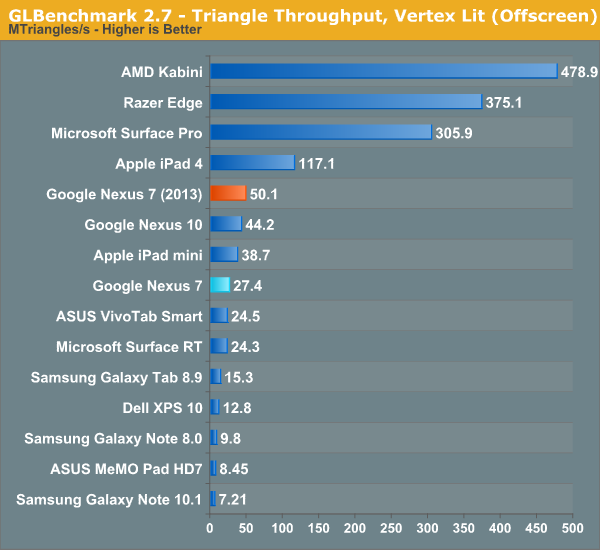

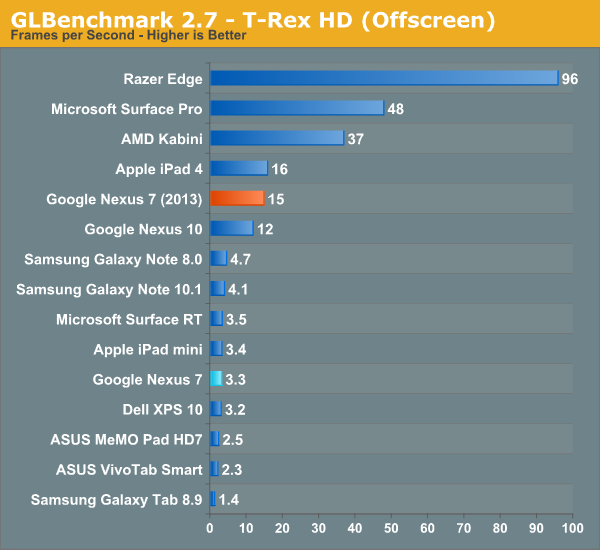
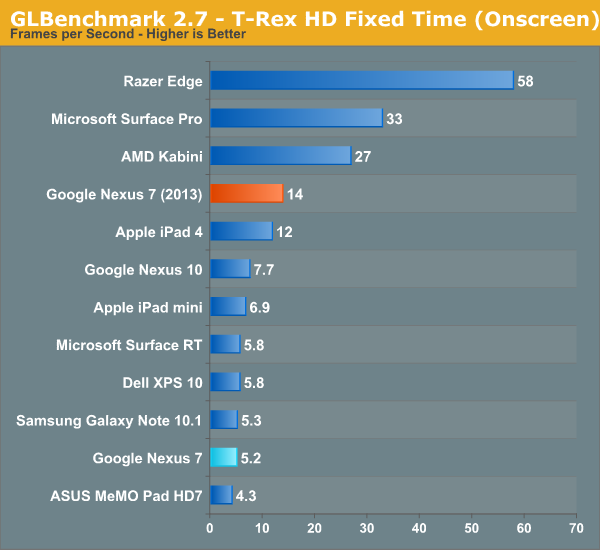
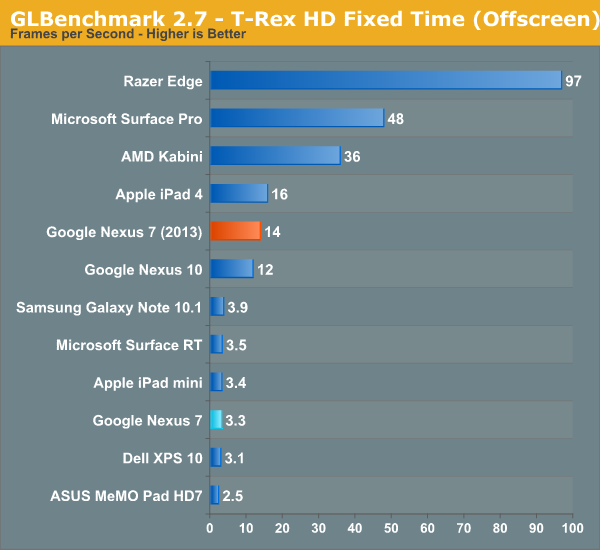
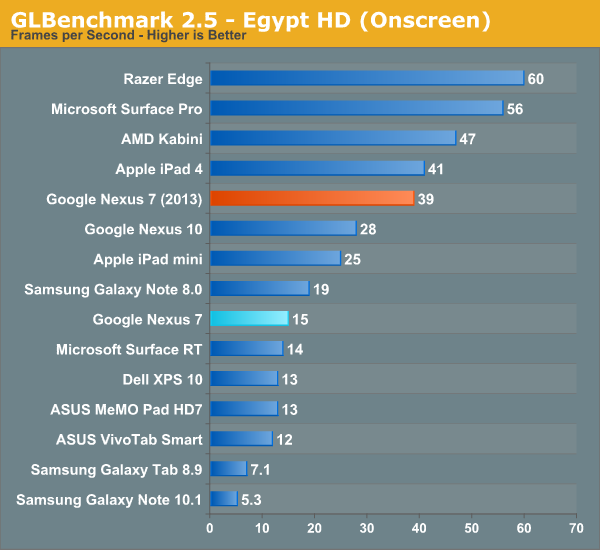
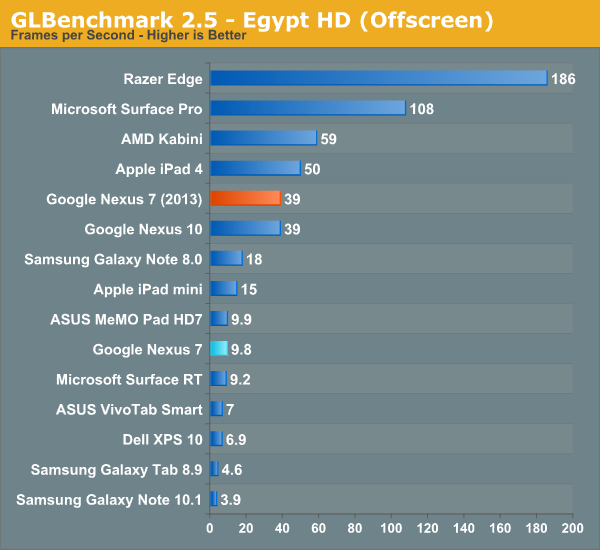
Suffice it to say, moving from 1.2–1.3 GHz Tegra 3 to 1.5 GHz APQ8064 represents a big jump forwards in performance. Google claimed 1.8x improvement on CPU performance, and 4x improvement on GPU, which gets validated pretty much consistently through the benchmarks. I never felt like Tegra 3 was a slouch by any means (performance was more I/O bound on the OG Nexus 7, which we’ll talk about in a moment), but the new Nexus 7 has ample performance for the considerable increase in screen resolution.
Dat eMMC
It wasn’t any secret with the original Nexus 7 that much of the real world performance was gated by storage I/O throughput – we wrote about it after all – and storage performance was a common complaint while multitasking on a few other previous and similar era ASUS tablets. Most of the time performance was acceptable, and for $200 you can’t complain too much about things, the issue was that further on in the life of the tablet performance began degrading somewhat notably, leading to complaints.
Obviously the first thing I did on the Nexus 7 (2013) was run Androbench with the same 100 MB settings to test and see what out of box I/O performance looks like. Things are much better with the new Nexus 7 than they were with the previous one, so at a high level all is good.
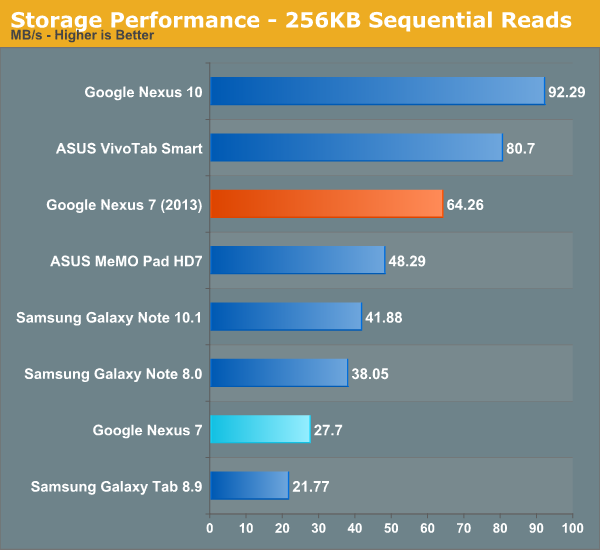
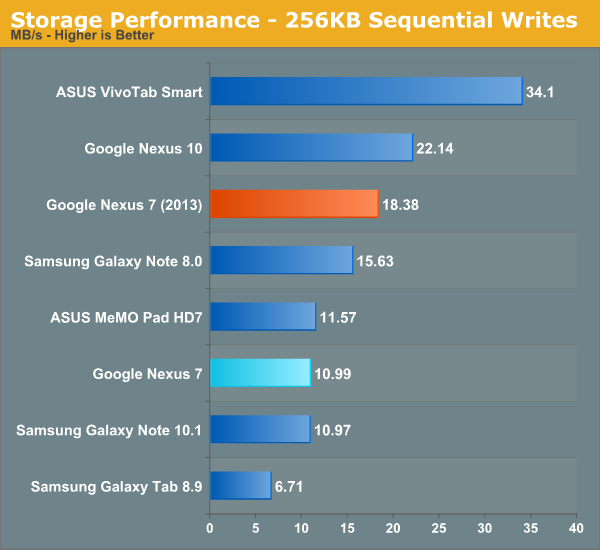
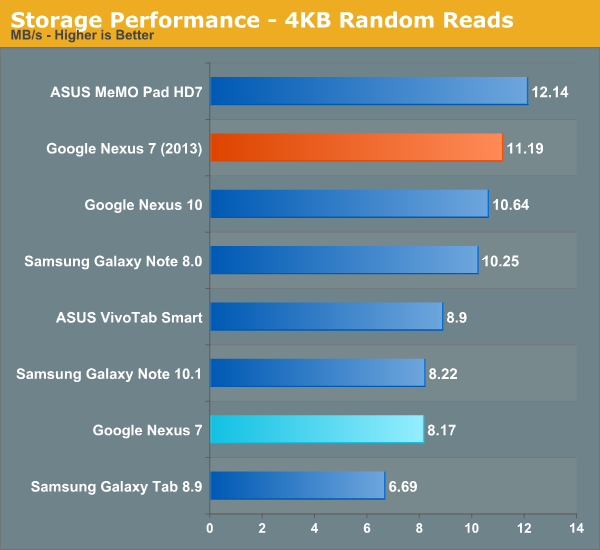

The story actually is a bit more involved however. One of the big problems was that the slowness which occurred with the prior Nexus 7 took device aging to appear – it was great for the first few months, but after you started loading it things tailed off. The new Nexus 7 (2013) with Android 4.3 includes support for fstrim, essentially idle garbage collection, which TRIMs the eMMC when a few conditions are met – the device is idle, screen off, and battery above roughly 70-percent. I’m told that TRIM support has been part of the eMMC standard since around version 4.2, it was just a matter of enabling it in software. The result is that the new Nexus 7 shouldn’t have these aging affects at all. Better yet, fstrim support has also been added to the old Nexus 7 with as of the Android 4.3 update, so if you’ve got a Nexus 7 that feels slow, I/O performance should get better after fstrim runs in the background. I'm checking on whether the other Nexus devices have also had TRIM support added. I would consider the slow storage aging problem fixed as of now, and Google took the eMMC and storage I/O performance issues with the previous Nexus 7 to heart for this version.


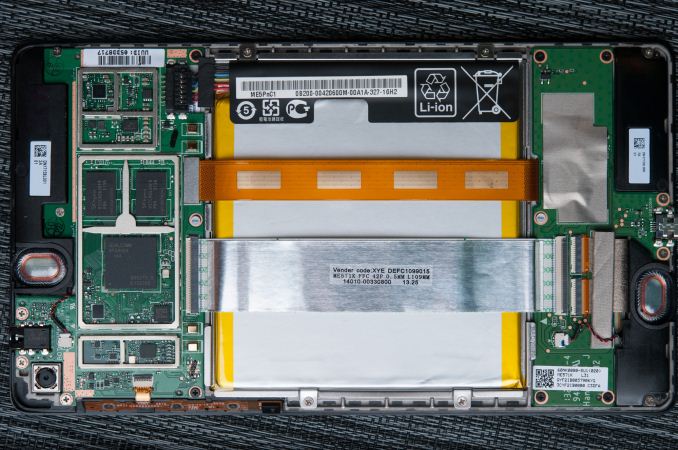
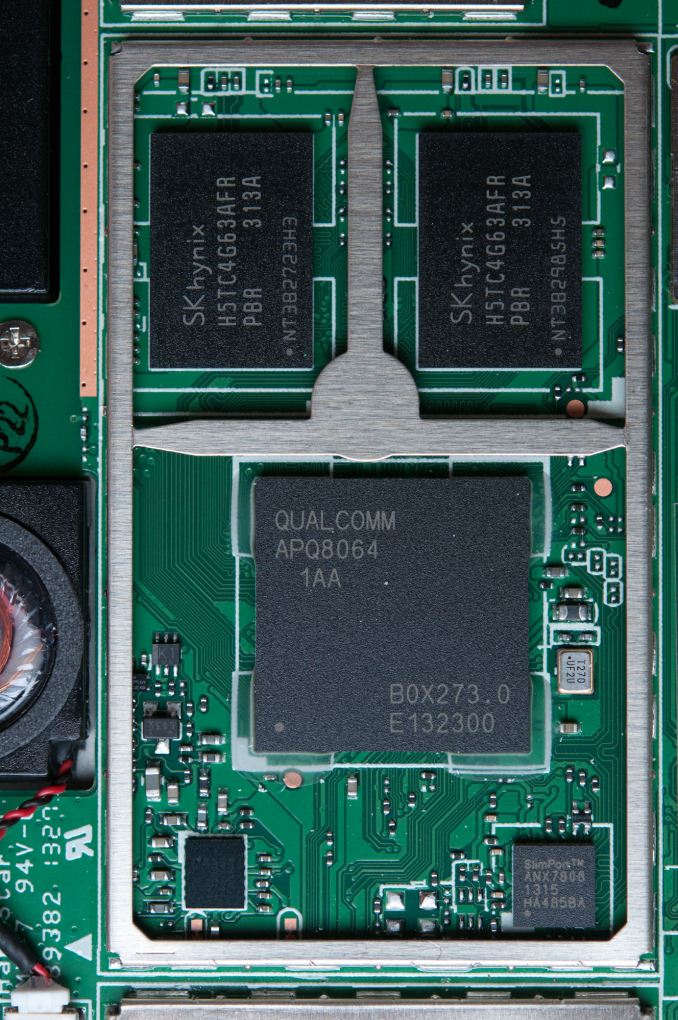














252 Comments
View All Comments
wrkingclass_hero - Saturday, July 27, 2013 - link
^adfly linkstexasti89 - Saturday, July 27, 2013 - link
If they had included a SD slot (likely a dollar or so worth of parts), this tablet would have been the perfect tablet for me.CityBlue - Saturday, July 27, 2013 - link
"What’s a little awkward is how tall the bevel at top and bottom looks on the Nexus 7"I think you mean bezel, not bevel...
Brian Klug - Saturday, July 27, 2013 - link
Oops, fixed, thank you!-Brian
techtoll - Sunday, July 28, 2013 - link
Price is what is the most tempting. Surely going for this whenever available in India.flashbacck - Sunday, July 28, 2013 - link
people on the androidcentral forums are saying the headphone jack does function as a line-inImpulses - Sunday, July 28, 2013 - link
This mini war of small HDMI connectors is getting out of hand... Maybe I'm just the only oddball with this particular issue, but right now I have three different devices with three different HDMI output implementations, and the Nexus 7 will be a fourth...My pocket camera uses micro HDMI whereas my M43 mirrorless camera uses mini HDMI. Ok, I can understand that, I can even understated why we'd want a combined USB/HDMI port on phones and even tablets... Didn't MHL already solve that tho? AFAIK HTC & Samsung are still using MHL, now Google's pushing Slimport!
I can charge a phone, a small tablet, an MP3 player, a Bluetooth headset, a small portable speaker, a USB battery pack/back, and even a pocket camera with one micro USB charger/cable... Yet I need four different dongles for HDMI output. One step forward and two steps back I tell ya.
Impulses - Sunday, July 28, 2013 - link
Looked up Brian's old pipeline port on the Slimport adapter and answered my own question, I'd forgotten Slimport dispenses with MHL's need of powered adapters... I guess that's worth dealing with yet another port, why aren't other manufacturers transitioning to this? Not like MHL ever materialized on TVs (which promised power AND HDMI over a single cable if it came to pass). $30 is kinda steep tho, is no one else offering Slimport adapters still?JNo - Sunday, July 28, 2013 - link
wireless charging (Qi) ?!?!This will be such an awesome feature in the UK when they never bring out the charging orb, just like they haven't for the Nexus4 almost a year after release!
Well done google! Selling products based on imaginary features!
/angry sarcastic rant over
weiran - Sunday, July 28, 2013 - link
It's a bit disingenuous to say the Nexus 7 dominated it's form factor, the iPad mini probably sold 3-5x more than the OG Nexus 7.I say probably as we don't know for sure because Google refuses to release sales data, which also makes me believe sales either were under expectations or Google takes a big enough hit on each sale they don't want it public info.